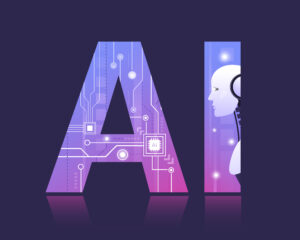
Understanding the Mechanics of Chatbots
Even though they weren’t taught grammar rules, they usually use grammar correctly

In the ever-evolving landscape of artificial intelligence, chatbots have emerged as fascinating conversational companions.
From the nostalgic SmarterChild on AOL Instant Messenger to the advanced ChatGPT and Google Bard, these AI programs have come a long way.
But what goes on behind the scenes? How do these seemingly human-like entities operate, and what are the caveats we should be aware of?
The Mechanics of Chatbots:
Chatbots, at their core, are artificial intelligence programs designed to respond to questions in a manner that mimics human conversation.
Despite their sophisticated appearance, their primary strength lies in predicting and generating words one after another. Take ChatGPT and Google Bard, for example; these chatbots rely on large language models, a specific type of algorithm.
These models are trained on Mad-Libs style questions, creating a program capable of producing coherent responses to user prompts.
The Illusion of Humanity:
While chatbots may give the impression of being human-like conversationalists, it’s crucial to remember that this is merely an imitation. Unlike us, they lack common sense, and the rules of grammar aren’t ingrained in their programming.
Their proficiency is confined to the training data they’ve received, and sometimes, they might generate responses that border on nonsensical.
The Limitations:
As we marvel at the capabilities of chatbots, it’s essential to acknowledge their limitations. These AI entities are not endowed with the innate understanding and reasoning abilities that humans possess.
They operate within the bounds of their training and can only respond based on the data they’ve been exposed to. This limitation can sometimes result in the generation of answers that might seem plausible but lack true comprehension.
The Balancing Act:
As users, it’s crucial to strike a balance in our expectations. While chatbots can be incredibly useful for various tasks, it’s important not to overestimate their capabilities.
They are tools designed to assist, but they should not be relied upon for tasks requiring deep understanding, critical thinking, or nuanced decision-making.
Conclusion:
Chatbots have indeed come a long way from their early days on AOL Instant Messenger. The advancements in AI, particularly in the realm of language models, have given rise to sophisticated conversational agents.
Understanding the mechanics behind these chatbots allows us to appreciate their capabilities while being mindful of their limitations.
As we continue to integrate these AI companions into our daily lives, let’s approach them with curiosity, acknowledging their impressive feats while being aware of the artificial boundaries that define their existence.
Never miss any important news. Subscribe to our newsletter.
Related News


British Investor Who Predicted US Slump Warns of Next Crash

I’m a Death Doula: 4 Reasons I Believe Death Isn’t the End


Tech to Reverse Climate Change & Revive Extinct Species

AI Unlocks the Brain’s Intelligence Pathways

XPENG Unveils Iron Robot with 60 Human-like Joints

Can AI Outsmart Humanity?

11 ChatGPT Prompts to Boost Your Personal Brand

Keir Starmer Hints at Possible Tax Hikes on Asset Income

Navigating the Future of AI: Insights from Eric Schmidt
